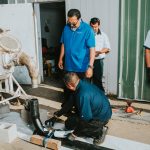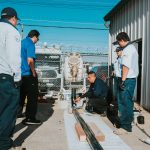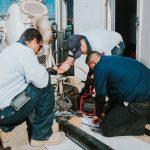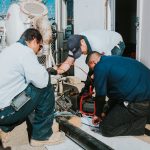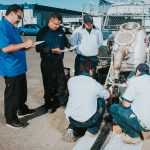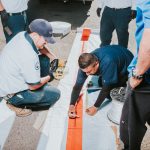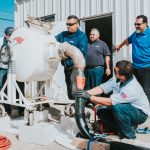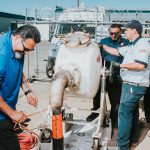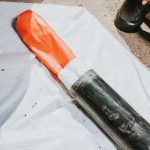Cured In Place Pipe Lining: Plumbing Magic

Sewer Lines… the Silent Killer
Owning a home is a dream for many people, so as a potential homeowner or current homeowner, it’s important to understand what’s underneath your home and where your responsibility lies. As a homeowner, there are two key items to be aware of: home sewer lateral line and sewer inspections. These are critical items homeowners often don’t think about until it’s too late.
When considering the sewer pipes connected to your home, you need to know the difference between the upper lateral and the lower lateral, and what the homeowner is responsible for. The upper lateral is the part of the home’s sewer line that runs from the structure to the property line, which is commonly the curb or sidewalk. The lower lateral is the section of the home’s sewer line that runs from the property line to the city’s main sewer line in the street. The homeowner is responsible for any and all repairs to the upper lateral, but what about the repairs to the lower lateral that connect to the main sewer in the street? This may be the homeowner’s responsibility as well. Buyers and agents sometimes assume that any problems passed the property line will be repaired by the city. That’s not always the case with the lower lateral as it differs across the country on whether the homeowner or the municipality is responsible for any repairs. Be sure to check your local municipalities to ensure who the responsible party is for the repairs.
It’s common to hear that homeowners don’t know the state of their pipes or the property damage from sewer back-ups that result in very expensive repairs. It’s important to understand that this damage is generally not covered by a homeowner insurance policy. Another example of damage to sewer lines not covered by homeowner’s insurance is tree roots invading the sewer line. It’s extremely important to check your insurance policy so you’re prepared in the unfortunate event this damage occurs.
There are some properties more prone to broken sewer lines and they include older properties, homes that have slow drains, homes with settlement issues, homes with trees that have deep, aggressive roots, homes where there is already a history of sewer issues, homes with clay tile or cast iron sewer lines, and homes that have trees over or near the sewer lines. If your house falls into one of these categories, it’s inherently important to pay attention to the pipes underneath your home and think about getting a licensed professional like Armstrong Plumbing to inspect the pipes. Even if there aren’t any visible issues or problems, there could be something lying underneath that will wreak havoc sooner or later.
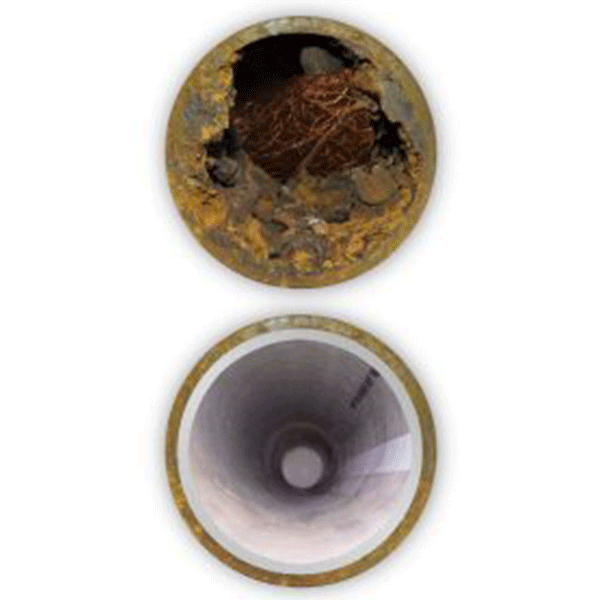
Cipp to the Rescue
However, there is finally hope for homeowners dealing with sewer issues. Cured-in-place pipelining is a relatively new product that creates a brand new line through your existing sewer line, leaving you with a brand new pipe within a day! Ok, that sounds fine and dandy but what exactly is cured in place pipelining? CIPP is when a resin-saturated felt tube made of polyester, fiberglass cloth, or a number of other materials suitable for resin impregnation is inverted or pulled into a damaged pipe. It is usually done from the upstream access point (manhole or excavation). It is also possible to invert the liner upstream (e.g. from the downstream access point) Little to no digging is involved in this trenchless process, making for a potentially more cost-effective and less disruptive method than traditional “dig and replace” pipe repair methods.
These images of a pipe cutaway tell the story of what cured-in-place pipelining means. They illustrate a failing pipeline with root intrusion, corrosion, or even breakage. The lower pipe illustration shows the same pipeline with a rehabilitated relined and sealed new pipe liner. This process could mean the difference between costly excavation and rebuilding of infrastructure versus a less invasive simple day of “No-Excavation” pipe repair solutions.
Cured-in-place pipe repair systems provide you with a solution to failing underground sewers and pipelines. CIPP can rehabilitate pipes ranging from 2″ – 48″ in diameter. If you have a failing pipeline please reach out to Armstrong Plumbing and chat with one of our highly skilled relining experts. That call could save you thousands of dollars on your broken pipe repair project. Not to mention bringing you peace of mind that your plumbing needs will be taken care of!
Below are some images of the Armstrong Plumbing Trenchless Division showing the process of CIPP.
